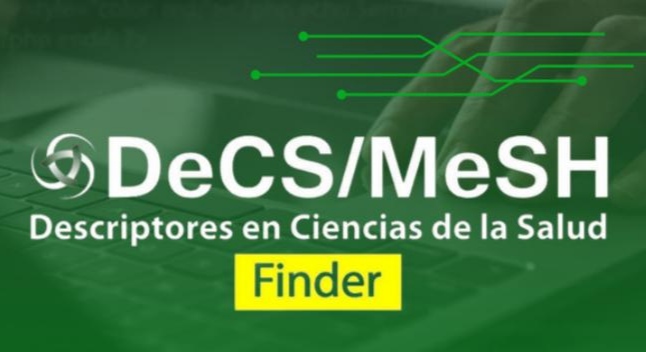Collodion baby, rare genodermatosis. Case report
Keywords:
ichthyosism, ichthyosis, lamellar / diagnosis, infant, newbornAbstract
mutations that alter the formation of the epidermis and the cornification processes. The term collodion baby defines a dermatosis of the newborn, characterized by a thick membrane that covers the body surface. The case is presented with the aim of showing the importance of diagnosis from the early stages of the disease in a newborn. A one-day-old newborn, wrapped in a thick and shiny membrane similar to cellophane, compresses structures such as: eyes, nose, earlobes, mouth, hands and feet. Without family history of previous genetic diseases. The diagnostic evaluation is through the clinical method. It is evident how early diagnosis and timely treatment of this rare genodermatosis can avoid complications, such as secondary infection and favor better genetic counseling and efficient quality of life.
Downloads
References
Portal de información de enfermedades raras y medicamentos huérfanos. Ictiosis. Orphanet: Portal [Internet]. 2020 [citado 10 Nov 2023]. Disponible en: https://www.orpha.net/es/disease
Vázquez GL, Granados G, de la Rosa JD. Ictiosis lamelar en una unidad neonatal. Rev Ciencias Méd [Internet]. 2020 [citado 10 Nov 2023];24(4):e4466. Disponible en: https://revcmpinar.sld.cu/index.php/publicaciones/article/view/4466
Paez E, Tobia S, Colmenarez V, Herrera K, Duarte JM, Vivas SC. Ictiosis lamelar autosómica recesiva: revisión de la literatura y caso clínico. Rev Argentina Dermatol[Internet]. 2020 Ene-Mar [citado 10 Nov 2023]; 101(1): 101-10 . Disponible en: https://www.scielo.org.ar/scielo.php?pid=S1851-300X2020000100101&script=sci_abstract&tlng=en
Leone de Moraes ET, Souza Freire MH, Rocha F, Linha Secco I, Costa T, Queiroz Afonso R. Nursing care for a newborn with Lamellar Ichthyosis: a case study in a neonatal unit. Rev Esc Enferm USP [Internet]. 2019 [citado 10 Nov 2023]; 53: [Aprox 2p]. Disponible en: https://pubmed.ncbi.nlm.nih.gov/31800813/
Morales-González LA, Hernández-Pallares R, Salinas-Meritú A. Caso familiar de ictiosis laminar. Rev Mexicana Pediatr[Internet]. 2019[citado 10 Nov 2023];86(2): 71-4. Disponible en: https://www.scielo.org.mx/scielo.php?script=sci_arttext&pid=S0035-00522019000200071
Navarro SJ, Molina Barrios SJ. Caso de ictiosis laminar en honduras. Rev Cient Cienc Méd [Internet].2018 [citado 10 Nov 2023];21(2):73-4. Disponible en: http://www.scielo.org.bo/scielo.php?script=sci_arttext&pid=S1817-74332018000200013
Portal de información de enfermedades raras y medicamentos huérfanos. Síndrome de EhlersDanlos. Orphanet: Portal[Internet]. 2020 [citado 10 Nov 2023]. Disponible en: https://www.orpha.net/es/disease
Manzur J. Dermatología. La Habana: Editorial Ciencias Médicas; 2002.
Arenas R. Genodermatosis. Sección IX. Dermatología. Atlas, diagnóstico y tratamiento. 7maed. México, D. F.: McGraw-Hill Interamericana [Internet]. 2019 [citado 10 Nov 2023]. Disponible en: https://accessmedicina.mhmedical.com/book.aspx?bookid=2775
El-Sayed N, Seifeldin NS, Gobriol CKT. High frecuency of primary hereditaryichthyosis in the North-East Region of Cairo, Egypt. Postepy Dermatol Alergol[Internet]. 2018 [citado 10 Nov 2023];35(2):161-6.Disponible en: https://www.ncbi.nlm.nih.gov/pmc/articles/PMC5949546/
Leyva-Peguero YE, Querol-Betancourt N, González-Rivero M. Ictiosis arlequín en un neonato. MESISAN [Internet]. 2022 [citado 10 Nov 2023]; 26(1):133-40. Disponible en: https://medisan.sld.cu/index.php/san/article/view/3328/2596
Marcheco B, Rojas I, Lantigua A, Benítez Y, Suárez B. Manual de normas y procedimientos.Servicios de Genética médica en Cuba. La Habana: Ciencias Médicas [Internet] 2017 [citado 10 Nov 2023]. Disponible en: http://www.bvscuba.sld.cu/libro/manual-de-normas-y-procedimientos-servicios-de-genetica-medica-en-cuba/
Published
How to Cite
Issue
Section
License
Copyright (c) 2024 Norberto Esqueff Díaz, Mercedes Capote Lobo, Maura Hernández Cruz

This work is licensed under a Creative Commons Attribution-NonCommercial 4.0 International License.
Medimay protects copyright from the very first moment the submission is made, but upon publication it assumes a Creative Commons 4.0 (cc-by-nc) license, which allows the use of the work to share (copy and redistribute the material in any medium or format) and adapt (remix, transform and build from the material) as long as exclusive mention is made of the publication in the journal as a primary source, prohibiting its commercialization. The author always retains his/her right.















 This site is licensed under a
This site is licensed under a